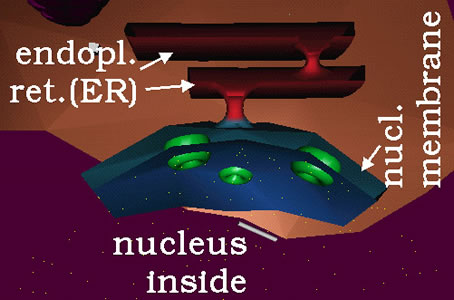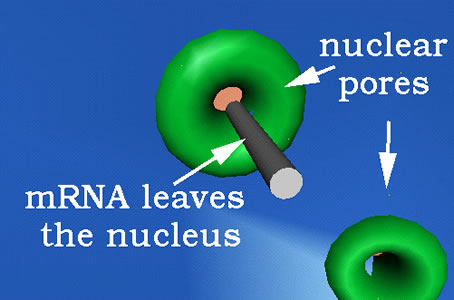Protein synthesis in the endoplasmic reticulum (ER) and their subsequent restructuring in the Golgi apparatus (GA)
You see here some fundamental functions that occur in these structural elements of the cell. The nucleus stores the DNA which keeps the genetic information of the cell (see mitosis).Structures around the nucleus
The nucleus interior is shown as yellow dots. A segment of double nuclear membrane is drawn above it. The nuclear membrane contains pores. From the nuclear membrane protrudes the endoplasmic reticulum (ER)
mRNA, bearing the information about the sequence of new proteins, is manufactured in the nucleus. Now it leaves it through one of the nuclear pores.
After the mRNA has come out of the nucleus, it comes to the outer surface of the endoplasmic reticulum (ER), where it combines with many ribosomes. These combinations are called polysomes. You can see a more detailed animation of such protein synthesis elsewhere. The polysomes produce many protein molecules.
Proteins manufactured by the polysomes travel through the ER. You see ER and the Golgi apparatus (GA) shown both in transection.
Protein molacules are going to be packed into the transport vesicle which bring them to the Golgi apparatus (GA).
Proteins that have been manufactured in the endoplasmic reticulum (ER) are brought into the Golgi apparatus (GA) by the transport vesicles. In the GA the protein structure is further modified. Finally the restructured proteins are secreted out of the GA into the transport vesicles which bring them to the cell surface and out of the cell.
Many proteins from the GA, like the enzymes produced by glands, are excreted out of the cell.
3D VRML world. You need VRML plugin to see it.



